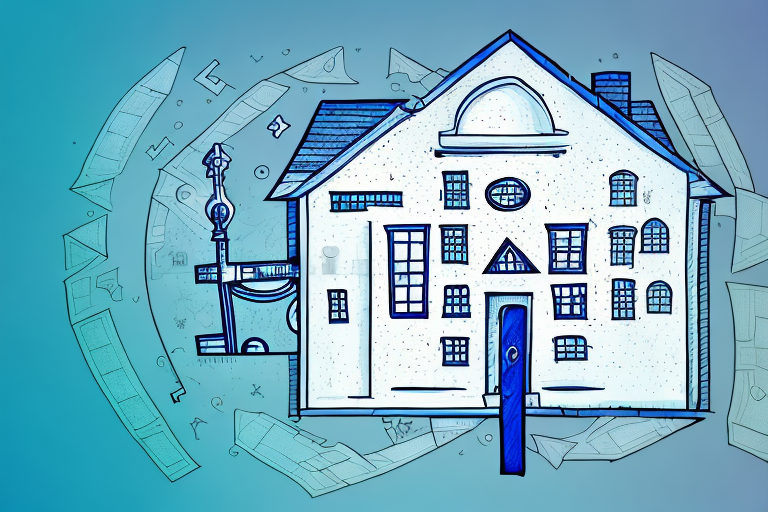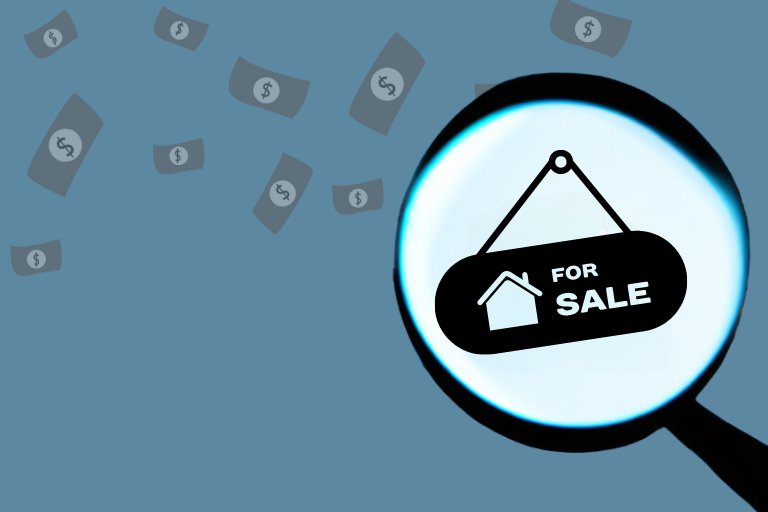Investing in rental properties can be a lucrative and rewarding experience. However, it’s important to understand the key metrics that impact rental property investment success. One of the most important metrics that investors must consider when evaluating potential rental properties is rental yield.
“Understanding Rental Yields”
“What is Rental Yield?”
Rental yield is a financial metric that measures the annual return generated by a rental property based on its value. Essentially, rental yield measures how much income a property produces each year as a percentage of its total value.
“Gross vs. Net Rental Yield”
There are two types of rental yield metrics: gross and net. Gross rental yield represents the total rental income generated by a property as a percentage of its overall value. Net rental yield takes into account expenses like property management fees, repairs, and taxes to provide a more accurate picture of a property’s profitability.
“Why Rental Yield Matters for Investors”
While rental income is important, it alone is not sufficient for measuring a property’s profitability. Rental yield is a more comprehensive metric that investors use to evaluate the financial potential of a rental property. Successful investors look for rental properties with a high rental yield, because it indicates a property that is profitable and generates a high return on investment.
“Factors Affecting Rental Yields”
Investing in rental properties can be a lucrative way to generate passive income. However, rental yields can be affected by various factors. Understanding these factors can help investors make informed decisions and maximize their rental yields.
“Property Location”
Location is a critical factor that affects rental yields. Properties located in areas with high demand for rentals have a higher chance of attracting tenants and generating rental income. Location also impacts property values, which affects rental yields.
For instance, properties located in urban areas with access to public transportation, schools, and amenities such as shopping centers and parks are more attractive to tenants. Such properties typically have higher rental yields than those located in rural areas or areas with limited access to amenities.
“Property Type and Size”
The type and size of a rental property also impacts rental yields. Large properties generally have higher rental yields than small properties, because they generate more rental income. Additionally, property type (apartment, single-family, etc.) can play a decisive role in determining rental yields, as there may be variations in rental costs associated with certain property types.
For example, apartments in high-rise buildings may have higher rental yields than single-family homes due to the higher demand for apartments in urban areas. Similarly, larger properties such as multi-unit buildings may have higher rental yields than single-family homes due to the economies of scale associated with managing multiple units.
“Rental Demand”
Rental demand refers to the number of tenants seeking rental properties in a particular area. Areas with high demand generally mean greater competition among tenants, which results in higher rental rates. In such cases, rental yields are higher too.
Rental demand can be affected by various factors such as population growth, job opportunities, and the overall economic conditions of the area. For instance, areas with growing populations and a strong job market are likely to have higher rental demand and therefore higher rental yields.
“Property Management Costs”
Investors must consider property management costs when calculating rental yields. Professional property management can significantly increase rental yields by maintaining the property, setting optimal rental rates, and keeping vacancy rates low.
Property management costs typically include fees for services such as tenant screening, rent collection, maintenance, and repairs. While these costs can eat into rental yields, they can also help investors avoid costly mistakes such as renting to problematic tenants or neglecting necessary repairs.
“Vacancy Rates”
Vacancy rates are another metric that impacts rental yields. High vacancy rates indicate that a property is not generating any rental income during those periods, which affects the overall rental yield of the property.
Reducing vacancy rates can be achieved through effective marketing strategies, setting competitive rental rates, and providing quality amenities and services to tenants. Additionally, maintaining good relationships with tenants can encourage them to renew their leases and reduce turnover rates.
In conclusion, understanding the factors that affect rental yields is crucial for investors seeking to maximize their returns. By considering factors such as location, property type and size, rental demand, property management costs, and vacancy rates, investors can make informed decisions and achieve their investment goals.
“How to Calculate Rental Yield”
Calculating rental yield is a crucial step in evaluating the financial potential of a rental property. Rental yield is the percentage of income generated by a property, compared to its total value, including any upfront costs like renovations. It is a key metric for investors looking to make informed decisions about purchasing rental properties.
“Step-by-Step Guide to Calculating Rental Yield”
The first step in calculating rental yield is to determine the annual rental income of the property. This can be done by multiplying the monthly rent by 12. Once you have the annual rental income, the next step is to determine the total value of the property, including any upfront costs like renovations. This figure should include the purchase price, any closing costs, and any other expenses associated with acquiring the property.
Once you have both figures, you can divide the annual rental income by the total value of the property. The resulting figure is the rental yield percentage. For example, if a property generates $20,000 in annual rental income and is valued at $400,000, the rental yield is 5%.
“Using Rental Yield Calculators”
While calculating rental yield manually is straightforward, it can be time-consuming, especially when comparing multiple properties. Online rental yield calculators can help streamline the process and generate more accurate rental yield percentages. These calculators take into account associated costs like property taxes, insurance, and maintenance fees, making them a valuable tool for investors.
When using a rental yield calculator, it’s important to ensure that all the necessary information is entered correctly to generate an accurate result. This includes the property’s purchase price, monthly rent, and associated costs.
“Comparing Rental Yields Across Properties”
When evaluating potential rental properties, it’s essential to compare rental yields across different properties to determine which ones offer the best return on investment. However, rental yield should not be the only metric considered when making investment decisions. Other factors, such as location, property condition, and potential for appreciation, should also be taken into account.
Investors should also consider the local rental market when evaluating potential properties. Factors like vacancy rates, rental demand, and rental prices can all impact the financial potential of a rental property.
In conclusion, calculating rental yield is an important step in evaluating the financial potential of a rental property. Using online rental yield calculators can help streamline the process and generate more accurate results. However, rental yield should not be the only metric considered when making investment decisions, and investors should take into account other factors like location and local rental market conditions.
“Maximizing Rental Yield”
As a property investor, maximizing rental yield should always be a top priority. There are several strategies that can be implemented to achieve this goal, and in this article, we will explore some of the most effective ones.
“Improving Property Condition”
One of the easiest ways to maximize rental yield is by ensuring that the property is in good condition. This means fixing any existing issues and updating the property’s interior regularly. A well-maintained property is more likely to attract tenants who are willing to pay higher rental values, which in turn boosts rental yields. Additionally, regularly maintaining the property’s exterior can also help to increase its curb appeal, making it more attractive to potential tenants.
Investors should also consider making upgrades to the property to improve its functionality and appeal. For example, installing energy-efficient appliances or adding a fresh coat of paint can make a big difference in attracting tenants and increasing rental yields.
“Effective Marketing Strategies”
Marketing rental properties appropriately is another crucial factor in maximizing rental yields. Investors should advertise their properties on popular rental websites and use social media to their advantage. They should also ensure that the property is showcased through visually appealing and informative materials, such as high-quality photos and detailed descriptions of the property’s features and amenities.
Investors can also consider offering incentives to potential tenants, such as a free month’s rent or a waived application fee. These incentives can help to attract more tenants and increase rental yields in the long run.
“Optimizing Rental Rates”
Setting optimal rental rates is another important factor in maximizing rental yields. Investors should analyze market rental rates in their area to ensure they are not overpricing or underpricing their rental properties. Rental rates that are too high can drive away potential tenants, while rental rates that are too low could lead to a lower rental yield.
Investors should also consider the value that their property provides to tenants. If the property has unique features or amenities, it may be appropriate to charge a higher rental rate. Conversely, if the property is in need of upgrades or repairs, it may be necessary to lower the rental rate to attract tenants.
“Minimizing Vacancy Rates”
Vacancy rates can significantly impact rental yields. Minimizing vacancy rates can be done by retaining tenants, properly marketing the property, and conducting regular maintenance checks. Investors should ensure they follow appropriate rental regulations to avoid overcharging tenants or ignoring their expectations and rights.
Investors can also consider offering incentives to current tenants to encourage them to renew their lease. For example, offering a discounted rental rate or waiving a pet fee can help to retain tenants and minimize vacancy rates.
Overall, maximizing rental yield requires a combination of strategies, including maintaining the property condition, effective marketing, optimal rental rates, and minimizing vacancy rates. By implementing these strategies, investors can increase their rental yields and achieve greater success in the real estate market.
Conclusion
When evaluating potential rental properties, it is important for investors to consider rental yield as a reliable metric that represents the profitability of the investment. Understanding the factors that impact rental yields is crucial when choosing a rental property to invest in. By optimizing the rental yield, investors can increase their return on investment and enjoy the financial rewards of rental property ownership.







